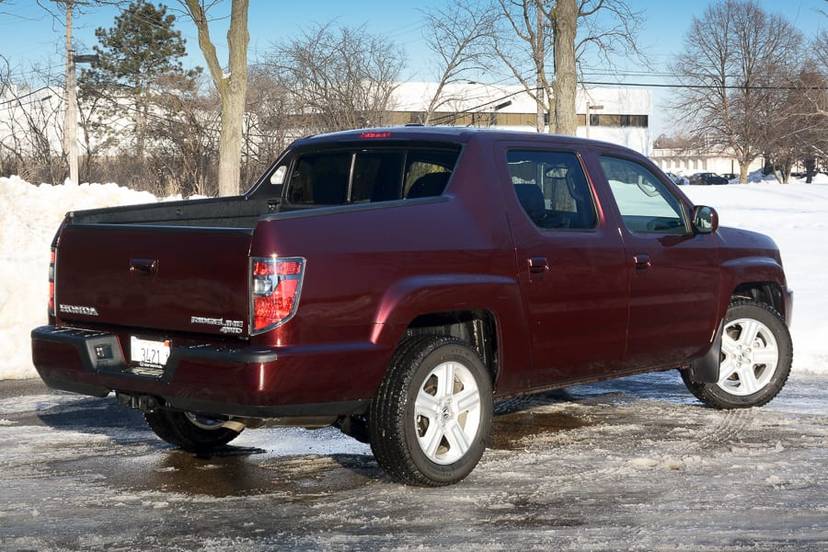
When I first drove the Honda Ridgeline pickup two years ago, I was lukewarm on the idea of a pickup truck for people who don’t like pickup trucks. The Ridgeline seemed a bit light-footed, with that precious 5-foot fiberglass-and-resin bed, V-6-only engine, awkward profile and decidedly carlike feel. If you want a pickup, buy a pickup, I figured: something with an appropriately jiggly ride, a beefy frame, a big V-8 engine.
A week in a 2007 Ridgeline came close to changing my mind. I don’t know if it’s me or the Ridgeline, but this one seemed more nimble, solid and substantial than the early Ridgelines I drove. I don’t remember the handling being this good; I was seeking out winding roads, something I’ve done only in the past with true sport trucks such as the Ford SVT Lightning and Dodge SRT 10. Highway ride was excellent but never numb. It’s among the most comfortable trucks I’ve driven, but it retains an appropriate road feel.
Still, the Ridgeline is setting no sales records. Honda moved about 50,000 in 2006, which is about 750,000 trucks behind the Ford F-Series. Certainly Honda isn’t trying to compete with Ford, but 50,000 a year is still short of Honda’s expectations. Of course, sales of medium-to-large pickups are down for everybody except Toyota, and it has kept the numbers up for the lame-duck Tundra model with unToyota-like incentives.
Part of the Ridgeline’s problem is that it’s expensive. Let me qualify that: It’s priced similarly to comparable trucks. But though there are cheap models of most other trucks — the Ford F-150 starts at just more than $17,000 — the cheapest Ridgeline is $10,000 more. Certainly it has a lot more equipment, and all Ridgelines are four-wheel drive, but the point is that there are expensive models of all pickups, but there are only expensive Ridgelines.
The test Ridgeline was the top-of-the-line RTL, which had every feature offered but satellite navigation. Inside, no complaints: The leather seats were superb, and even the rear seats weren’t bad. Instruments and controls were executed to Honda levels.
And there are innovations, including a lockable trunk that’s beneath the floor of the bed — just flip it up, and you have 8.5 cubic feet of extra storage space. The tailgate also swings down or opens to the side.
In size, the Ridgeline feels right. Length is 206.8 inches, width is 77.8 inches. A Nissan Titan, by comparison, is 224.2 inches long, 78.8 inches wide. The Ridgeline is just that much easier to park and back up.
The 3.5-liter V-6 is rated at 247 horsepower. Mated to a five-speed automatic, the Ridgeline has ample power and runs on regular gas. It will tow 5,000 pounds, the minimum to be considered a real truck.
I still think there are better buys in the truck world than the Ridgeline. But for the vast majority of those of us who need a vehicle such as this, I’m not sure that there’s a better truck.



































